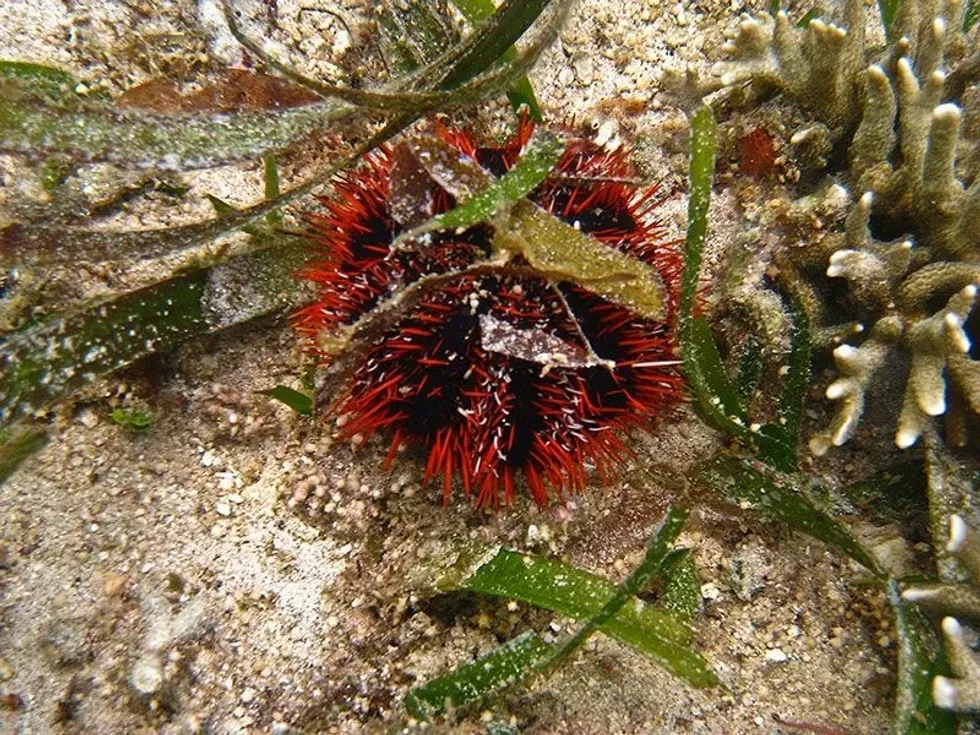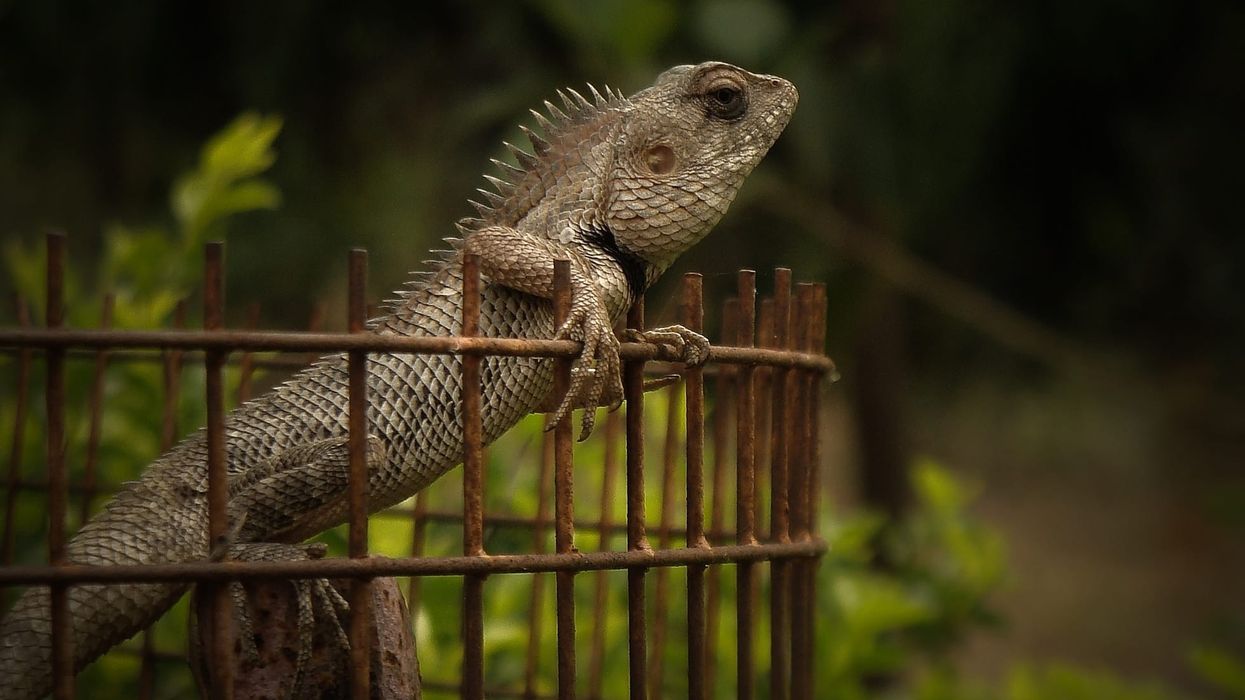Clypeasters, more commonly known as cake urchins, are sea urchins that belong to the Clypeasteridae family and the Echinoidea class of animals. These urchins are mainly found in shallow coastal waters and reefs, lagoons, and around bays.
Their mouth is in the center, and their whole body is covered with thin and short spines known as tube feet. The lower part of their body is used to suck on food from the ground, with five teeth mainly because they reside on the deepwater surface.
These urchins are considered poisonous creatures, and even so, many people like to keep them as pets in their home aquarium. Just like fish, this urchin engages in external fertilization where they release thousands of larvae. These larvae metamorphose as they attach themselves to a group of their kinds or any debris or hard surface underwater.
Read on to know more such enlightening facts about the cake urchin. To learn more about similar marine species, check out crown-of-thorns starfish facts and flower urchin facts.
Cake Urchin Interesting Facts
What type of animal is a cake urchin?
The cake, or sea, urchin is a marine invertebrate with echinoderm and belongs to the Clypeasteridae family of animals. They are similar to species such as the green sea urchin.
What class of animal does a cake urchin belong to?
These sea urchins belong to the Echinoidea class of animals within the order Clypeasteroida. These creatures are invertebrates, like brain corals.
How many cake urchins are there in the world?
Unfortunately, due to insufficient data, there isn't an exact number of cake urchins around the world.
Where does a cake urchin live?
This sea urchin that belongs to the phylum Echinodermata is found in the Red sea, the Hawaiian island, Indo-Pacific ocean and is endemic to New Zealand.
What is a cake urchin's habitat?
The sea urchin finds the coastal water and rocky reefs as their favorable habitat based on the history of ages. They also move around in their vast groups across bays and lagoons of a few subtidal areas.
Who do cake urchins live with?
Cake urchins are known to live together with others of their kind. When not living or moving around in a colossal group, this sea urchin can also live alone in isolated areas.
How long does a cake urchin live?
Cake urchins are species with spines like short feet that may have a lifespan anywhere between 20 to a maximum of 200 years.
How do they reproduce?
There isn't much information available about the reproduction process of the cake urchin. Although, it is known that the cake urchin engages in external fertilization.
It is common for the eggs to be present around the mouth or near the backside, which is also on the top of the body. Cake urchin larvae use their feet to metamorphose into young urchins soon.
What is their conservation status?
This sea urchin species are Not Evaluated in the International Union for Conservation of Nature's Red List. Hence, the conservation status of these urchins is unknown.
Cake Urchin Fun Facts
What do cake urchins look like?

A cake urchin can be white-blue or green in color. The cake urchin has white tube feet all over its surface that look like spines. The urchin uses the tube feet to travel lengths and camouflage amongst the seaweeds or reefs that it comes across. It has a flattened symmetrical body.
How cute are they?
It is difficult to categorize these advanced urchins as cute as they do not have an expressive face, mouth, or even spines.
How do they communicate?
The cake urchin communicates with the help of its simple nervous system. This system extends from its mouth and connects with the spines that are more like the tube feet. Tube feet cover the whole spiny external part of the sea urchin and enable it to move slowly using hydraulics.
How big is a cake urchin?
With its advanced size, the cake urchin can be twice as big as the purple short spine pin cushion urchin, with a size range of 3.5-4 in (8.9-10.16 cm).
How fast can a cake urchin move?
Even though the exact speed of this cake urchin is unknown, one can say that the urchin, also known as a sand dollar, moves slowly on hard external surfaces.
How much does a cake urchin weigh?
This sea urchin has a weight range of up to 1 lb (454 g).
What are the male and female names of the species?
There are no sex-specific names for the cake urchin.
What would you call a baby cake urchin?
Baby urchins are called larvae.
What do they eat?
These urchin species are omnivores and feed on any and every micro-organism available in the water. They are known to burrow themselves in the sand and prey on plankton or feed on the organic particles available in the soil. They may also feed on seaweed, algae, and mollusks. However, they may be preyed upon by pufferfish and octopus species.
Are they poisonous?
Yes, cake urchins are highly poisonous and may even leave puncture marks through a divers wetsuit when in contact. Though most urchins can be consumed, it is not advisable to eat cake urchins.
Would they make a good pet?
Even though they are venomous, keeping an urchin as a pet is possible. Although, because it requires so much care, they aren't advised to be kept in home aquariums.
Did you know...
These urchins release venom when they attach to an external object. Hence, even though human encounters with cake urchins have been rare throughout history, many humans have accidentally stepped on these urchins. Their tube feet, like spines, can penetrate through thick wet suits and are highly poisonous.
What is the biggest sea urchin?
Red sea urchins are one of the most common and largest sea urchins in the world. One can find them around Alaska, Baja California, north Japan, and Mexico.
Do sea urchins have brains?
It is unlikely that sea urchins have brains. Their whole body acts based on the nervous system, which can give the body advanced instructions to survive and protect itself, yet not knowing if they feel pain. Hence this simple nervous system can be considered as the organism's brain.
Here at Kidadl, we have carefully created lots of interesting family-friendly animal facts for everyone to discover! Learn more about some other Echinoderms from our starfish fun facts and blue sea slug interesting facts pages!
You can even occupy yourself at home by coloring in one of our free printable urchin coloring pages.









